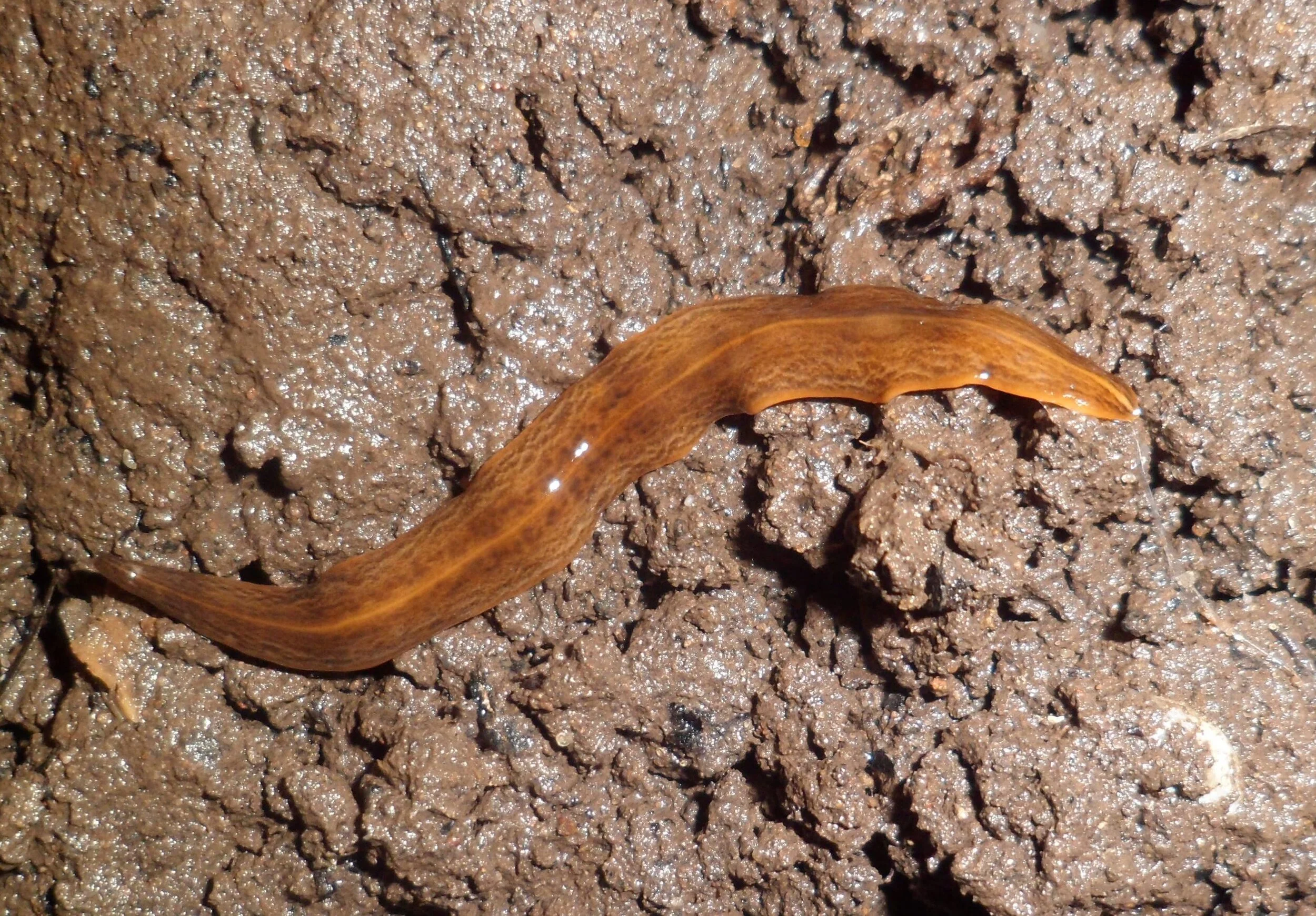I have seen this! Have you?
I nearly choked on my cuppa when I saw this picture in an article online this morning. Obama nungara!
No, not the former US President Barak Obama, but Obama nungara, the invasive flatworm that is spreading in the UK!
Horror of horrors, I have seen THREE on my plots in the last two years! I’ve got them! Or at least flatworms of some sort, as I didn’t have them scientifically identified.
So, why all the fuss?
Obama nungara is a land flatworm, native to South America. It grows to 7cm, but can stretch to 10cm when in motion. Hundreds of eyes cover its body, which may vary in colour from light brown to very dark brown, with or without visible markings.
Like other land flatworms, it is a predator of soil animals such as earthworms, snails and slugs. In recent years, I have developed a ‘difficult’ relationship with snails and slugs (a tale for another time), so while they MUST be an important part of the natural cycle, I won’t pretend to mourn their loss. I’m afraid I do use organic pellets that are advertised as non-toxic to birds, to protect my crops from snails and slugs at the moment (eggshells haven’t worked well). I did feel an immediate pang of concern on reading that Obama nungara eat earthworms though. Earthworms are essential soil for fertility and structure. They an aerate the soil and improving drainage.
Therefore Obama nungara is not good for gardeners. Not good for farmers. Not good for wildlife balance.
The inadvertent importation of land flatworms into the UK and EU countries is not new. The worms, as well as their eggs and cocoons are readily transported in the potting media of live plants. The New Zealand flatworm Arthurdendyus triangulatus, a native of South Island New Zealand is now established in the UK. A study conducted by Murchie & Gordon* in 2013 demonstrated that the New Zealand flatworm can have a negative impact on the biomass of certain earthworm species.
No scientific studies have been conducted on the impact of Obama nungara in Europe or the UK. However, it is believed to present a threat to the biodiversity of native wildlife.
I’ve had to do a Michael Winner-style ‘Calm down, dear!’ on myself to put the situation into perspective.
Over £1 billion pounds worth of live plants into the UK for our use annually. The importation of live plants into the UK from far and wide has skyrocketed, up 71% since 1999, according to the RHS. This growth is fuelled by our increasing consumption of horticultural products, which, in many respects, IS a very good thing indeed, as well as by our desire for the new and the exotic.
Along with our increased consumption has come a burgeoning UK plant health risk register, with over 1,000 pests and diseases documented – and counting.
As with many things in life, there are pros and cons.
I LOVE the pros here. We just need to put some serious effort into mitigating, and where possible totally eliminating the cons.
I was mesmerised when I first saw a picture of Dicksonia Antarctica en masse in their natural habitat about five years ago. I now have two, responsibly sourced (I’m assured) from New Zealand.
I don’t take myself out of the equation.
It remains to see how the Plant Passport scheme, and even Brexit, will impact efforts to improve biosecurity.
I’m left with the question, ‘What should I do if I find what I think is an invasive flatworm of whatever species?
I instinctively humanely ‘dispatched’ the three I found.
There are no known control measures available to gardeners. I’m sitting up now, and taking note. I really need to find out more about all this …
I will update this post with What to Do advice (including who to report a finding to) after some proper research. Please stay tuned.
*Citation: Archie K Murchie & Alan W Gordon (2013). The impact of the ‘New Zealand flatworm’, Arthurdendyus triangulatus, on earthworm populations in the field. Biological Invasions volume 15, pages 569–586







